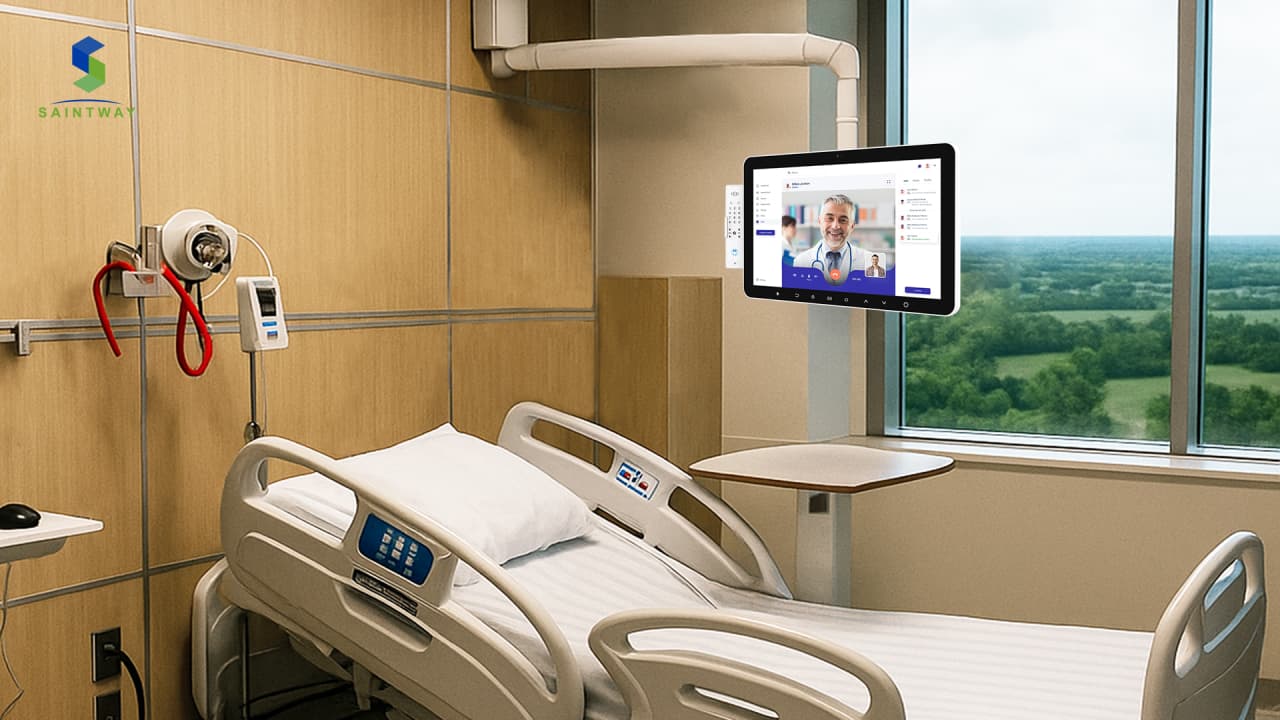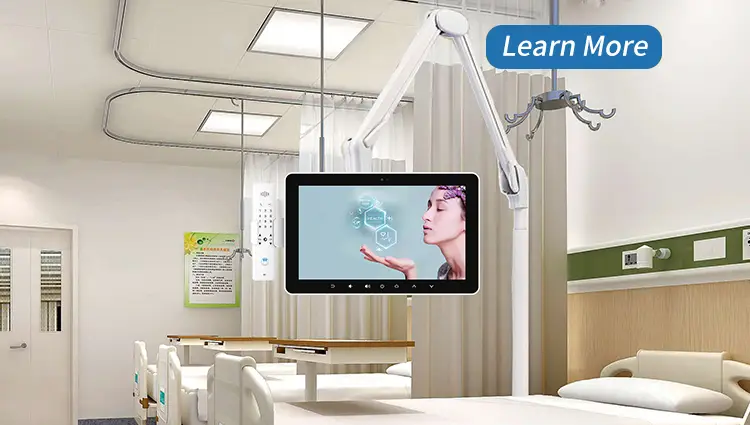In today’s smart hospital environment, having powerful software is only half the story. The real challenge? Delivering that innovation directly to the patient’s bedside.
- 1. How Bedside Infotainment Terminals Improve Patient Engagement in Smart Wards
- 2. Seamless Integration: Connecting Your Healthcare Software with Bedside Infotainment Terminals
- 3. Beyond Entertainment: Bedside Infotainment Terminals as Clinical Communication Tools
- 4. Customization at the Bedside: Tailoring Infotainment Terminals for Hospital IT Environments
- 5. Bedside Infotainment Terminals and the Future of Hybrid Patient Care
- 6. Reducing Staff Workload with Smart Bedside Infotainment Terminals
- 7. Data Security and Compliance in Bedside Infotainment Terminals
- 8. Touchscreen Comfort: Why UX/UI Matters in Bedside Infotainment Terminals
- 9. Choosing the Right Hardware: What Integrators Should Look for in Bedside Infotainment Terminals
- 10. Case Study: Smart Ward Transformation with Bedside Infotainment Terminals
- Final Thoughts
That’s where bedside infotainment terminals come in.
From boosting patient engagement to easing staff workload, these intelligent touchscreens are redefining how care is delivered and experienced. They’re not just for entertainment—they support clinical communication, EHR integration, and even real-time service requests. And with the right UX/UI design, they’re intuitive for patients of all ages.
But for software companies and integrator suppliers, the real power lies in customization and seamless integration. Whether you’re building a hybrid care platform, managing data security, or tailoring smart ward systems to meet hospital needs, the right bedside infotainment terminal can transform your offering.

1. How Bedside Infotainment Terminals Improve Patient Engagement in Smart Wards
Modern bedside terminals allow patients to take control of their stay—from viewing meal plans to watching TV, calling a nurse, or reading about their treatment. This sense of autonomy reduces anxiety, increases cooperation, and results in higher satisfaction scores. In short, they turn passive patients into active participants.
2. Seamless Integration: Connecting Your Healthcare Software with Bedside Infotainment Terminals
Today’s terminals are built with integration in mind. Whether you’re working with HIS, EMR, PACS, or nurse call systems, these devices offer wide compatibility via Android, Linux, or Windows platforms, supporting RESTful APIs, HL7, and FHIR standards. This allows real-time data exchange—bringing critical hospital functions right to the bedside.
3. Beyond Entertainment: Bedside Infotainment Terminals as Clinical Communication Tools
More than just screens for movies or news, these terminals are direct channels between patients and clinical teams. From requesting pain medication to filling out digital questionnaires, they streamline communication, improve documentation, and reduce workload on frontline staff—all while improving care continuity.
4. Customization at the Bedside: Tailoring Infotainment Terminals for Hospital IT Environments
Every hospital’s ecosystem is unique. The best bedside terminals offer full customization—from user interface and branding to app development and language localization. Integrators can align the terminal UI with existing systems and workflows, creating a unified and seamless digital experience for both patients and staff.
5. Bedside Infotainment Terminals and the Future of Hybrid Patient Care
As hospitals adopt hybrid care models—combining in-person, remote, and virtual services—bedside terminals serve as a launchpad for digital health. Patients can access teleconsultations, video rounds, e-consents, and educational resources right from their bed, reducing delays and enhancing continuity of care.
6. Reducing Staff Workload with Smart Bedside Infotainment Terminals
Smart terminals relieve hospital staff from non-critical tasks. Patients can independently submit service requests (like water or extra blankets), complete pre-discharge surveys, and explore self-care education. This automation reduces unnecessary nurse calls and allows care teams to focus on medical priorities.
7. Data Security and Compliance in Bedside Infotainment Terminals
Security isn’t optional—it’s essential. The best bedside terminals follow stringent compliance standards such as HIPAA, GDPR, and IEC 60601. With features like secure user sessions, encrypted communication, and remote device management, integrators can ensure patient data is protected across all touchpoints.
8. Touchscreen Comfort: Why UX/UI Matters in Bedside Infotainment Terminals
Patients include the elderly, those with limited mobility, and people in recovery—all of whom need intuitive interfaces. A terminal with responsive touch, large buttons, clear visuals, and adjustable settings ensures accessibility. Good UX is not just a feature—it’s a patient safety measure.
9. Choosing the Right Hardware: What Integrators Should Look for in Bedside Infotainment Terminals
Hardware matters. From antimicrobial coatings and high-brightness displays to POE support and secure mounts, the right specs can significantly affect usability and service life. Look for platforms that offer medical-grade certifications, OS flexibility, and support for long-term deployments.
10. Case Study: Smart Ward Transformation with Bedside Infotainment Terminals
A recent hospital project integrated infotainment terminals with a unified patient engagement platform. Within months, they saw a 25% drop in non-clinical nurse calls, a 40% rise in patient satisfaction, and faster discharge processes. This success wasn’t just about the software—it was about delivering it through the right hardware, in the right way.
Final Thoughts
Smart wards demand more than just smart software—they need smart delivery. Bedside infotainment terminals are the bridge between your digital solution and the human experience of healthcare. For integrators and software providers, they’re not an add-on—they’re a competitive advantage.
link:https://www.linkedin.com/pulse/bridge-gap-between-healthcare-software-patient-experience-wophc/

